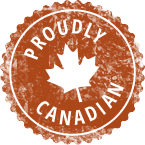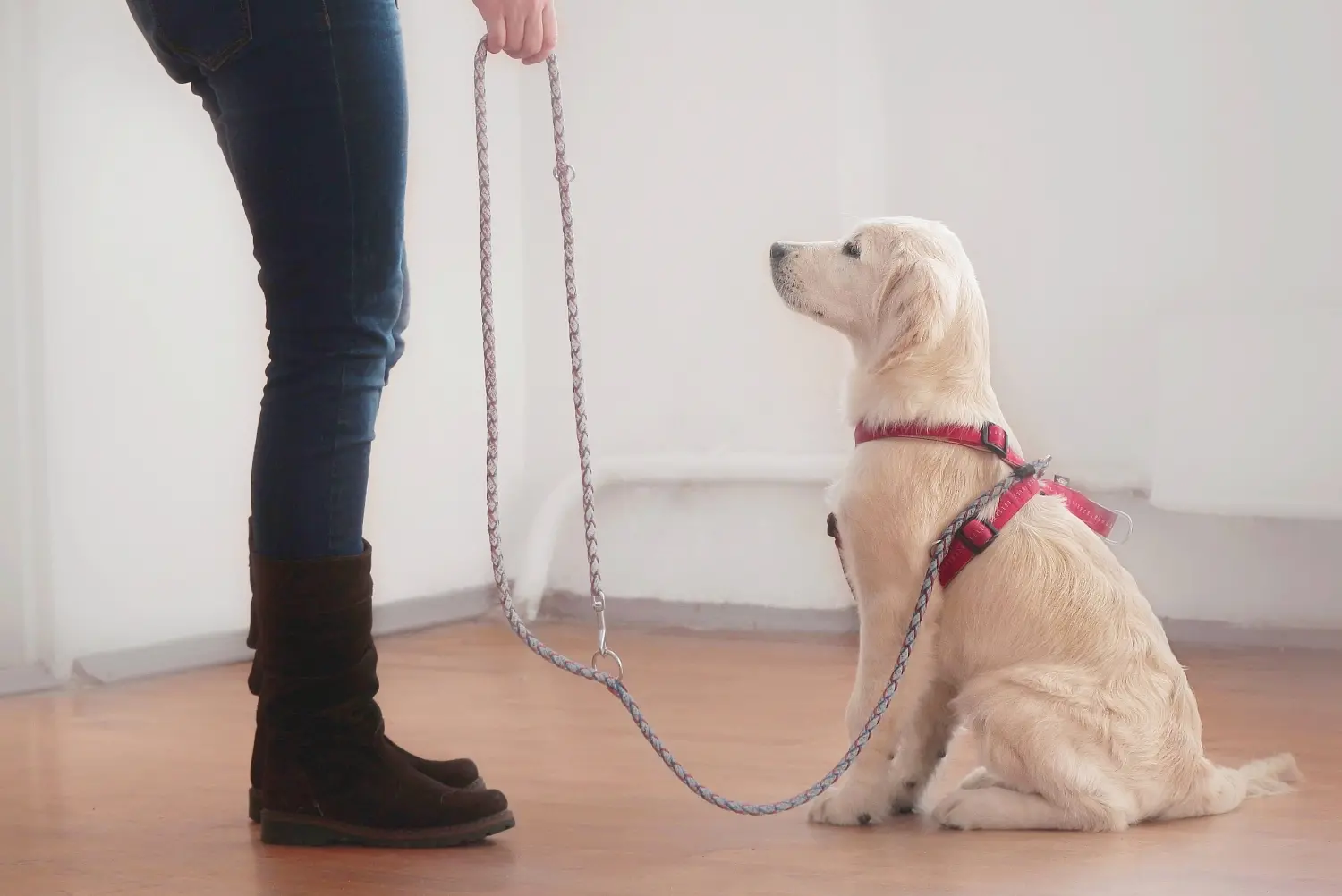
When you first bring home your puppy, it can feel completely overwhelming when you’re trying to figure things out. These puppy training tips can help you get started on the right paw! Best way to correct a dog's mistakes?
Once you get through your new puppy’s first 24 hours in his new home, training begins! This can be as simple as a sit or as complicated as separation training! If you are new to dog training, there are some common mistakes that are very easy to make, and you might not even realize you’re making them.
In order to help speed up your training process, we broke down the top 7 common puppy training mistakes as well as some suggestions on what to do instead.
The training process can be frustrating, especially if your puppy just isn’t catching on. But don’t give up just yet. Your puppy’s progress is only as good as the direction he’s given. Let’s take a look at what you might be doing wrong and some tips to help you fix it.
Mistake # 1: Trying to Train for Too Long!
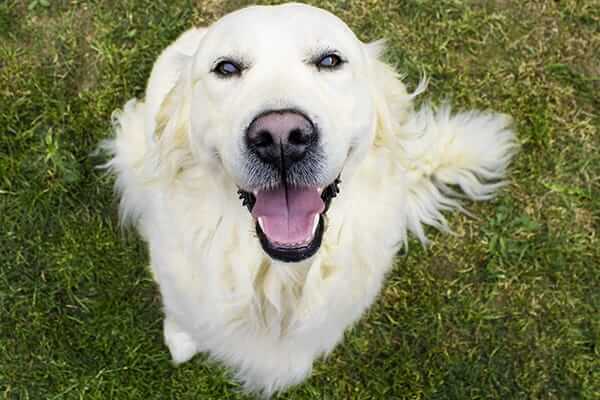
Puppies have a naturally short attention span and cannot focus for too long! Many owners make the mistake of trying to train their puppy for long periods at a time and usually end up being frustrated with the results. Your puppy will likely get bored, distracted, or just frustrated, resulting in him misbehaving or ignoring your commands.
Solution: Set a Time Limit
Training sessions should be kept short and sweet; train for the time it takes you to boil the kettle or load the dishwasher! Set a timer if that helps, but think of puppy training in bite-sized pieces. 5-10 minutes of training will ensure your puppy absorbs the lessons. Too much longer, and you'll lose his attention.
You can schedule several training sessions throughout the day so that your puppy is training for hours, but only in small increments. Some types of puppy training, like puppy potty training, will need to be practiced repeatedly throughout the day, so why not use this as a schedule for other training opportunities?
Mistake # 2: Expecting the Same Results in a New Environment
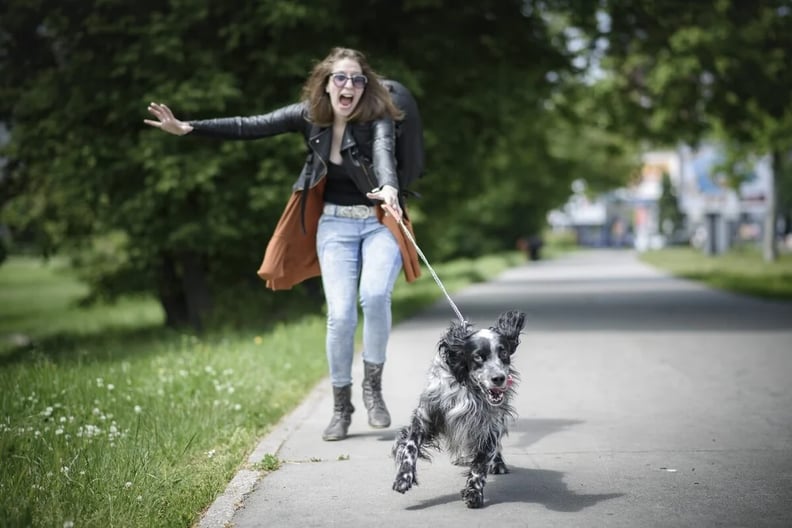
Trying to train your puppy too quickly and skipping vital steps can cause your new puppy to become confused and misunderstand what you are asking them. Just because your puppy is showing signs of understanding in one environment doesn’t mean he’ll apply that knowledge to other environments.
A classic example of this is loose leash walking, where many puppy guardians will expect their dog to loose leash walk after training indoors for a short period, but when they get outside in an exciting new environment, they get a sudden case of selective amnesia.
Solution: Train in Different Locations
Like many other behaviours, loose leash walking is a habit your dog needs to practice in a variety of environments to fully understand. Practice makes perfect, and in this case, the best way to practice is in environments where your puppy will be doing most of his loose leash walking.
Training in different locations and with different distractions will help your puppy learn to default to his training no matter where you are or who you are with. This becomes an invaluable skill once your puppy is old enough to start going to the dog park, the pet store, or other public places.
Mistake # 3 Going Overboard with Socialization!
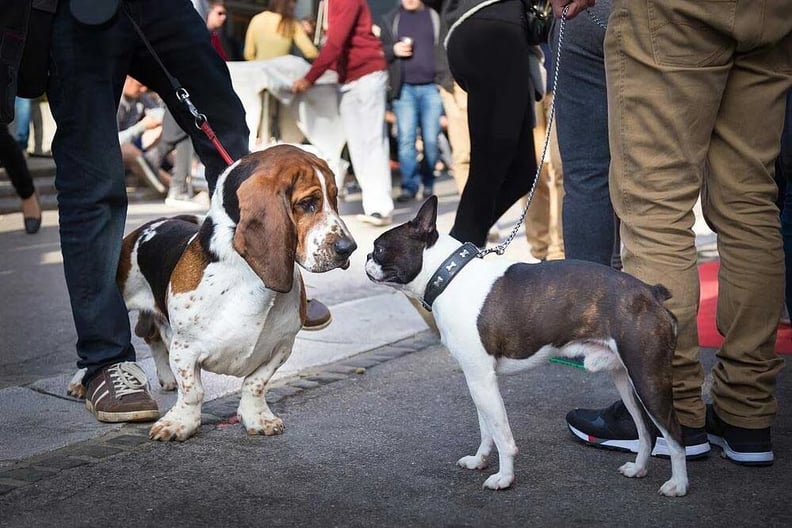
Socialization for puppies is very important, and many dog trainers online put a heavy emphasis on this. However, there seems to be such an emphasis on socialization that many guardians feel they need to dedicate 110% of their time to it.
While it is true that puppies are most responsive to new things between 8 weeks and 20 weeks of age, the reality is that puppies are learning throughout their whole lives! Previous advice suggested that your puppy must meet 100 people and dogs and go to 100 places by the end of their socialization phase, but what this advice leaves out is the importance of quality!
Solution: Quality is Better Than Quantity
When your puppy is first learning, their first experiences will formulate their template of how they feel and respond to things for the rest of their lives. It is much more important that they go into the world and have positive experiences than feel overwhelmed by a buffet of people, places, and dogs!
Look for opportunities for meaningful interactions so that your puppy will be able to safely and comfortably socialize with new people and pets. This could be as simple as having a friend over for a visit or going for a walk with a neighbour and their dog.
Mistake # 4: Using Their Clicker Like a Remote Control!
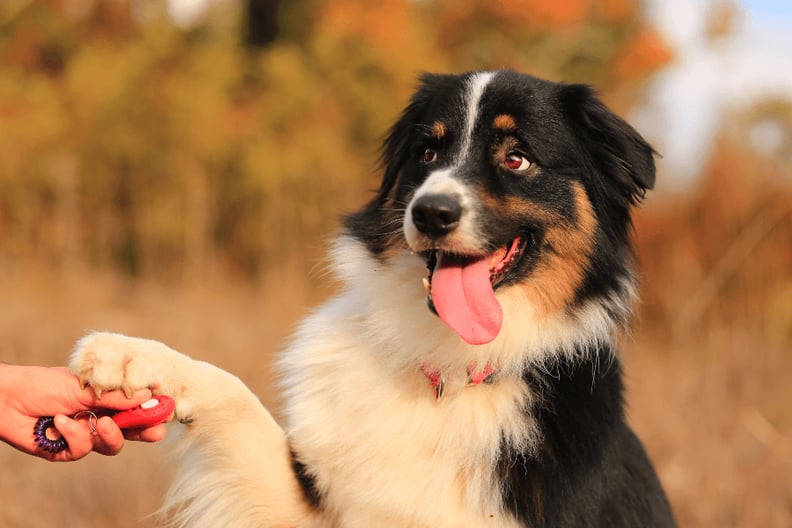
Many owners start training their dogs using a clicker, which is a small plastic device that makes a clicking noise. This distinct noise is used to communicate to the dog when they have done a behaviour you like before presenting them with a reward (usually a treat, but it can be toys or play).
Through a misunderstanding of what the clicker does, some owners start to use their clicker like a remote control, asking their dogs to do things by clicking first. For example, if the dog is running away, an owner may press their clicker as they know the dog will come back for a treat at the sound of it.
Solution: Wait for Good Behaviour Before Rewarding
The problem with this is that it actually reinforces the running away behaviour. The point of the clicker is the communicate with dogs what behaviours work for rewards.
If your dog is running away from you and you reward them for it with their click noise, the probability of them repeating this behaviour increases. Instead, try to wait for your dog to pay even the slightest bit of attention to you and reward them for this!
Mistake # 5: Repetition of cues
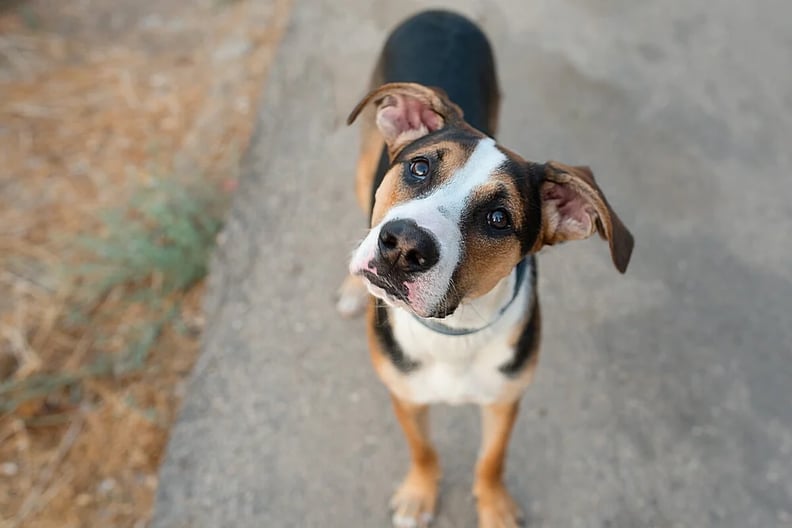
As humans, we have a natural propensity to repeat words when training. The classic example of this is when teaching a stay behaviour; owners will repeat the stay cue to ask their dog to remain in place. However, it is important to avoid this as much as possible!
If we repeat cues, dogs may come to expect that the cue must be done before they do the behaviour. For example, if we say, “Fido, come.. come.. come!” Fido may start to learn that he must hear his come cue three times before returning.
We must also try to stay positive when presenting cues to our dog. If you get frustrated and shout at your dog for a recall, they may understand that you are angry and avoid you entirely! Staying positive and cheery when giving cues (even if it’s raining and you’re late for a work meeting) will help to motivate your dog to return to you or respond appropriately to your commands.
Solution: Count to Five
Counting to five is a great rule to help you break the habit of repeating commands. After you say the command, stop and wait for your dog to respond. He might be stubborn or disobedient, but he also might be trying to recall the behaviour the command asks for.
You may find that allowing him a few seconds to get his bearings will result in him ultimately giving the correct response and will also help you keep your cool.
Mistake # 6: Relying Only on Vocal Commands
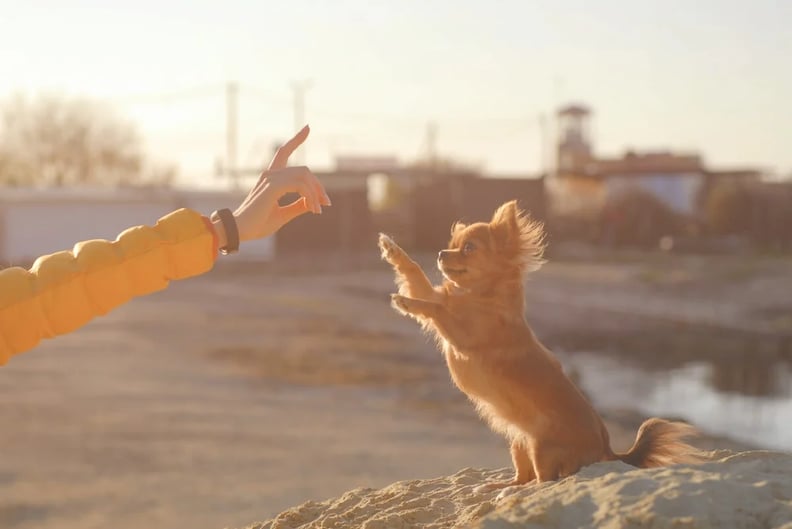
Even when you keep calm and give your puppy a chance to process the verbal cue, it still might not be enough. Relying solely on verbal commands can be confusing for a puppy, especially if they just don’t understand what you are asking.
A good example of this is when you ask your puppy to sit, and he does another trick or behaviour, like lay down or high five. He knows you are asking him to do something but isn’t quite sure what, so he does another or all of the commands he does know to try to please you.
Solution: Use Visual Cues
Dogs are naturally visual animals as opposed to auditory, so it may be beneficial to avoid using verbal cues alone or, in some cases, at all. Using hand signals/gestures prevents you from repeating the verbal cue and can help your puppy understand the command faster.
It’s common for puppies to understand a visual cue even if they don’t associate the word that accompanies.
Mistake # 7: Focusing on Mistakes, Instead of Rewarding Success
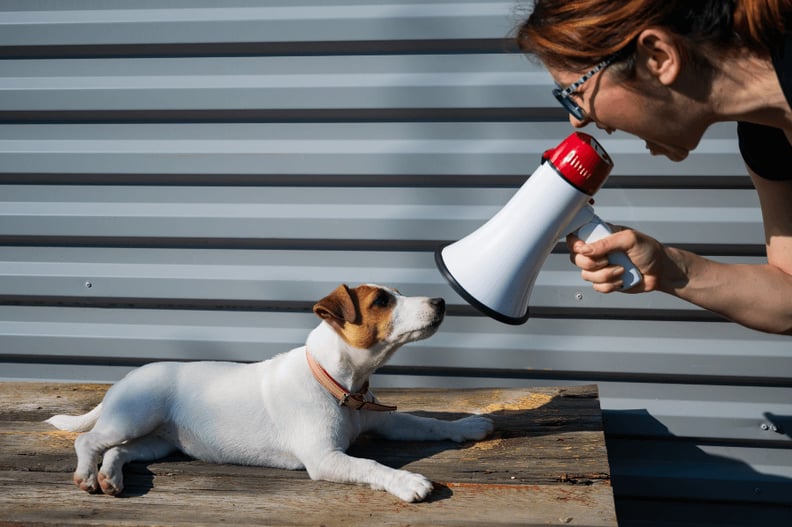
It is human nature to focus on a situation's negatives and try and correct to make things right. However, when dog training, focusing on the lighter side of life is important!
Reacting to your puppy’s mistakes doesn’t teach him what he should be doing, only that he’s done something wrong. In some cases, a response may be what your puppy is looking for, even if it’s negative, so your reaction could encourage bad behaviour.
Solution: Look for Opportunities to Reward
Treating it should involve three steps if you are having issues with a specific behaviour.
-
- The first step is to identify and manage triggers for bad behaviour. For example, if your dog is barking at the sound of the doorbell, asking neighbours to avoid ringing the bell while you work on calm behaviour would be a form of management. This is very important as practicing behaviours in ideal environments first will help your dog when you start to train under less ideal conditions.
- The second step is thinking about what you would like your dog to do next. Using the barking at the doorbell example, perhaps you would like your dog to go and lie down on their bed instead of barking. You could then train a go-to-bed behaviour, which you could then put on the cue of a doorbell.
- Finally, it is important to heavily reward your dog when they get it right! So, for example, if someone knocks at your door and your dog looks at you for direction instead of barking, heavily reward their good choice to look at you instead of rushing to the door. This also applies to behaviours like loose lead walking and recall, whereby if your dog naturally checks in with you, reward it!
- The first step is to identify and manage triggers for bad behaviour. For example, if your dog is barking at the sound of the doorbell, asking neighbours to avoid ringing the bell while you work on calm behaviour would be a form of management. This is very important as practicing behaviours in ideal environments first will help your dog when you start to train under less ideal conditions.
Top Basic Puppy Training Tips
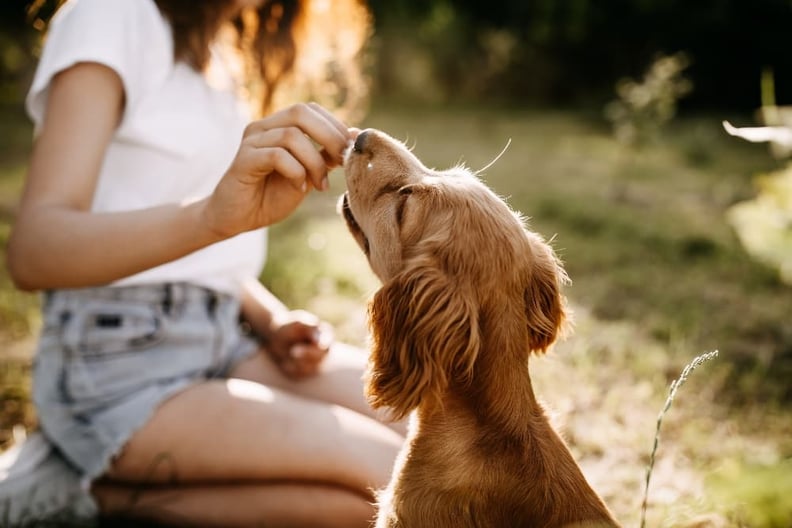
Now that you know what to avoid when carrying out basic puppy training, it’s time to focus on a few puppy training tips that can pave the way toward a lifetime of dog obedience success.
Your puppy is like a toddler. They are a clean slate with no real comprehension of right or wrong. You must teach them every step of the way. Just like with humans, some pups learn faster than others.
The best way to train a puppy is always through an individualized approach. Consider your young dog’s personality when determining what dog training tips to use and which ones to discard. What works for one pup might not work for another.
When you first bring home your furry bundle of joy, you might wonder exactly when to start training a puppy. The answer is always ‘immediately’. Your pup is like a sponge and will readily soak everything up. Interacting with your furry friend also helps reinforce a strong lifetime bond.
Below, we will explore basic dog training tips for beginners so you can develop your own puppy dog training guide that works best for you and your young canine buddy.
Motivational Training
When learning how to train a puppy, you’ll want to figure out what motivates the young pup. Many dogs are food-driven, so they will work well for a tasty dog treat. Other dogs simply do not have a deep interest in food.
Determine what dog training method best motivates your young pup and excites them. Food, praise, or a toy?
Vocal praise is something that can be used in addition to your reward system. Use a positive and excited tone to tell your pup he's done a good job. A simple "Good Boy!" or "Yes!" is an excellent way to express verbal praise.
These exclamations are short, but in time, your dog will understand that these words mean they've accomplished their goal.
Show Them the Way
Your puppy wants to please you. A pup is a happy animal who wants nothing more than to belong to the ‘pack’ and make everyone around them happy. Always show patience with your young pup and heap on the praise for a job well done. You need to show a puppy how to be good with consistency and caring.
Puppies often look at you as the leader of their pack, so they will watch your reactions and follow suit. If you get frustrated or anxious, so will your puppy. Keep yourself calm, be aware of your tone, and take breaks when needed.
Stop Unwanted Chewing
One main complaint of new puppy owners is that the young dog chews everything, such as shoes, furniture, and fingers. The best way to overcome unwanted chewing is to stock up on acceptable chew toys and treats that vary in texture.
Puppies going through their teething phase will be even more likely to chew. Rubber chew toys, like the Kong Puppy, will help to soothe sore gums and assist new teeth breaching the surface.
For very food-motivated puppies, a long-lasting dog chew like a Bully Stick will satisfy your pup's chewing desire and keep them occupied.
Any time your puppy starts to chew on something that is inappropriate, redirect the action by giving the pup an acceptable chew. By consistently redirecting their chewing, you will teach your puppy which things are okay to chew on and which are not.
Use a Crate When Potty Breaking
Puppies usually try not to potty in the area where they sleep. A crate is a great housebreaking tool. Invest in a crate that is the appropriate size for your young pup. It should not be too big or too small. You don’t want an overly large crate, or the pup will lie on one end of the carrier and eliminate on the other side.
Take your puppy out of the crate every hour and take the young dog out to potty. When the puppy relieves itself outdoors, provide ample praise and a treat. The pup can then enjoy play time before you place the young dog back in the crate and repeat the process.
Learn more about potty training your baby pooch in Puppy Potty Training 101.
Teach Your Pup to Come
Out of all the basic dog obedience commands your pup should master, learning to come can save your pup’s life. Imagine if your puppy slips out of his leash and is running towards a busy roadway. It is imperative that the young dog react quickly when you say, “Come”.
This is called basic recall training. Have a friend hold your pup on one side of the room. You can then walk to the other side of the room. Call the pup using the ‘come’ command.
Make sure that your voice is happy and enthusiastic. Have your friend release the puppy and reward the young dog with ample praise and a treat when the youngster runs to you. This simple basic training tip will help effectively teach your dog the command.
Practice this in the house, and eventually move the training to a secure outdoor area, like a fenced backyard. For more advanced recall techniques, take a look at Recall Training for Dogs: Teaching Your Dog to Walk Off-Leash.
The Sit Command
The sit command is easy to teach a young pup. Hold a high-value treat in your hand near the dog’s nose. Slowly lift the hand holding the treat so that your pup’s head follows the hand.
As you lift your hand, issue the ‘sit’ command. Your dog’s butt will naturally start to lower to the ground as the young dog’s head lifts.
When your furry friend sits completely down, give the youngster the treat and ample praise. Some trainers also push the puppy’s butt into a sitting position if the young dog hesitates too long, but it's best if they learn to sit on their own.
Any time you train a young puppy, repetition is needed to help the dog master the command. You’ll want to practice the sit command several times per day. Even after they've figured it out, keep practicing to help the lesson stick permanently.
One Paw in Front of the Other
Though dog training can feel very scary, it is important to focus on the positives. Progress will occur every day, even if it seems small and insignificant at the time. Remember - slow and steady wins the race!
By following our top tips, you can avoid common mistakes and progress a little faster. Training isn’t always smooth, but it can be fun if you make a plan and stick to it! In addition to teaching your dog the ropes, it’s an excellent way to bond with your puppy.
Frequently Asked Questions
What's the best age to start training a puppy?
Puppy training can begin as early as 8 weeks of age when they start to learn basic commands and socialization skills. However, formal obedience training should start at around 12 to 16 weeks of age.
What are some essential commands to teach a puppy?
Essential commands for puppies include "sit," "stay," "come," "down," and "leave it." These commands are the foundation of good behaviour and help ensure safety.
How can I potty train my puppy effectively?
Effective potty training involves creating a consistent schedule, taking your puppy outside frequently, and rewarding them for successful potty trips. Be patient and avoid punishing accidents.
What should I do if my puppy exhibits undesirable behaviours like chewing or biting?
Redirect your puppy's undesirable behaviours by offering appropriate chew toys and teaching no-bite. Use only positive reinforcement when training your puppy.
Is socialization important for my puppy, and how should I do it?
It is crucial that you socialize your puppy. Expose them to new people, animals, and places. Consider enrolling the pup in a puppy socialization class for structured learning.
How can I ensure that my puppy receives proper exercise and mental stimulation?
Provide age-appropriate exercise and mental stimulation through play. Take your pup on short walks, use interactive toys, and indulge in training sessions.
.png?width=200&height=66&name=logo%20(1).png)


